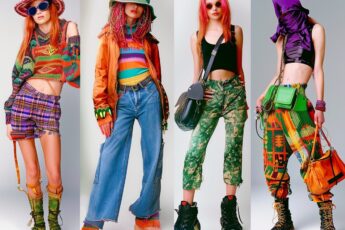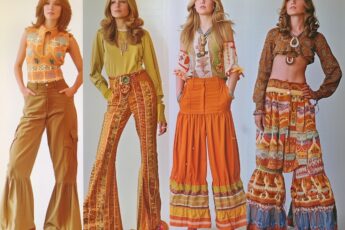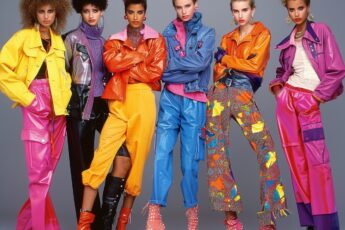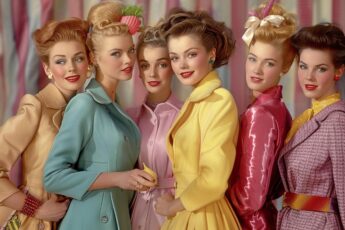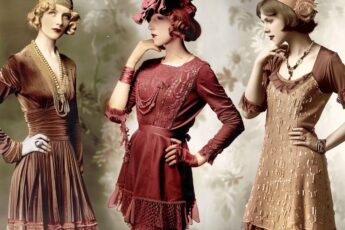1960s Fashion Revolution
I’ve always been captivated by the 1960s. This decade was a whirlwind of change, creativity, and rebellion. It reshaped the fashion landscape in ways we still feel today.
The ’60s saw a clash between tradition and innovation. Young people drove this change. They rejected their parents’ conservative styles and embraced bold colors, daring cuts, and new materials.
Music played a huge role. The Beatles, The Rolling Stones, and other bands influenced what people wore. Their fans copied their style, from mop-top haircuts to Chelsea boots.
Politics also left its mark on fashion. The civil rights movement and Vietnam War protests inspired a more casual, anti-establishment look.
Fashion is not something that exists in dresses only. Fashion is in the sky, in the street; fashion has to do with ideas, the way we live, what is happening.
This quote captures the spirit of 1960s fashion. It wasn’t just about clothes. It was a reflection of society’s rapid changes.
Key trends that emerged include:
- Miniskirts
- Go-go boots
- Psychedelic prints
- Space-age designs
These styles didn’t appear out of nowhere. They were a response to the era’s social upheaval. They represented freedom, youth, and a break from the past.
In this article, we’ll explore how these trends developed. We’ll look at the designers who shaped them and the icons who wore them. By the end, you’ll understand why the ’60s remain such a fascinating and influential period in fashion history.
Cultural Influences Shaping 1960s Fashion
The 1960s were a melting pot of cultural shifts that dramatically impacted fashion. Three main forces drove these changes: youth culture, the music scene, and political movements.
Youth culture exploded in the ’60s. Teenagers and young adults had more spending power than ever before. They used this newfound freedom to create their own styles. Gone were the days of dressing like mini-adults. Instead, young people embraced looks that shocked and challenged the older generation.
Music became inseparable from fashion during this decade. Bands like The Beatles and The Rolling Stones weren’t only musicians – they were style icons. Fans copied their idols’ looks, from long hair to flared pants. This blurred the lines between performer and audience, stage and street.
Political movements also left their mark on ’60s fashion. The civil rights movement and anti-war protests inspired a more casual, anti-establishment look. Activists often chose practical, comfortable clothes that reflected their values.
Style is a way to say who you are without having to speak.
This quote perfectly sums up how fashion became a form of self-expression and rebellion in the 1960s.
Key cultural influences on 1960s fashion:
- Rise of youth-oriented media
- Increasing globalization
- Second-wave feminism
- Space exploration
- Pop art movement
These factors combined to create a fashion landscape unlike anything that came before. They paved the way for the bold, experimental styles that define the decade in our collective memory.
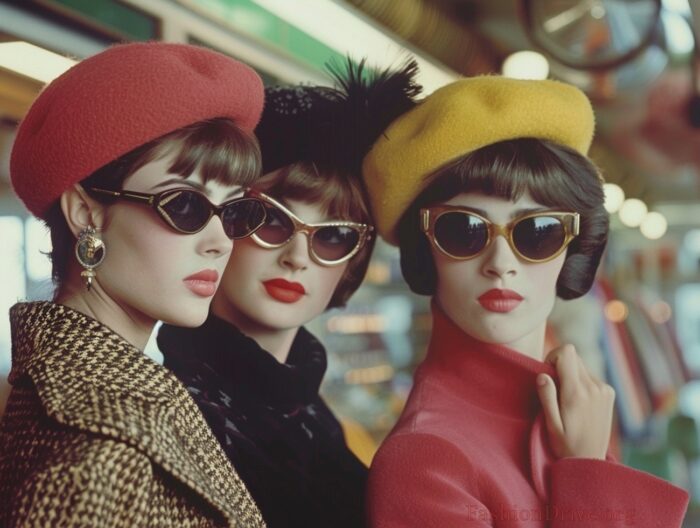
The Rise of Mod Fashion
Mod fashion burst onto the scene in the early 1960s, revolutionizing the way young people dressed. As a fashion writer, I find this movement fascinating for its bold aesthetics and cultural impact.
Mary Quant played a crucial role in shaping Mod style. Her boutique, Bazaar, became the epicenter of this new fashion movement. Quant’s designs were youthful, playful, and daring. She’s often credited with inventing the miniskirt, though this is debated among fashion historians.
Geometric patterns were a hallmark of Mod fashion. Bold stripes, checks, and circles adorned everything from dresses to accessories. These striking designs reflected the optimism and energy of the era.
One of the most interesting aspects of Mod fashion was its unisex appeal. Men and women often wore similar styles, blurring traditional gender boundaries in clothing.
Key elements of Mod fashion:
- Miniskirts and shift dresses
- Tailored suits for men
- Go-go boots
- Bright colors and bold patterns
- Short, geometric haircuts
Fashion should be a form of escapism, and not a form of imprisonment.
This quote captures the liberating spirit of Mod fashion. It freed young people from the constraints of traditional style and allowed them to express themselves in new ways.
Mod fashion’s influence extended beyond clothing. It encompassed music, art, and lifestyle choices. The movement’s emphasis on style and self-expression continues to inspire designers and fashion lovers today.
Space Age Aesthetics in Clothing
The 1960s saw fashion blast off into new frontiers, inspired by the space race. As humanity reached for the stars, designers created looks that seemed to come straight from science fiction.
André Courrèges led this fashion revolution. His 1964 “Space Age” collection stunned the world with its futuristic designs. I’ve always admired how Courrèges used clean lines and geometric shapes to create a bold, forward-looking aesthetic.
Metallic fabrics became a staple of space-age fashion. Designers used silver lamé, shiny vinyl, and metallic leather to mimic the look of astronaut suits, giving clothes a sleek, otherworldly appearance.
Headwear took on a distinctly cosmic flavor. Helmet-like hats and visors protected wearers from imaginary alien atmospheres, and these playful accessories completed the astronaut-chic look.
Key elements of Space Age fashion:
- Mini dresses with cutouts
- White and silver color palette
- Goggle-style sunglasses
- Flat, white go-go boots
- Synthetic materials like PVC
The future of fashion is out of this world.
This quote captures the excitement and innovation of Space Age fashion. Designers weren’t content with earthbound styles – they wanted to dress people for a future among the stars.
Space Age aesthetics influenced more than high fashion. Its impact trickled down to everyday wear, inspiring a generation to embrace the future through their clothing choices.
Hippie Counterculture Fashion
As the 1960s progressed, a new style emerged that contrasted sharply with the sleek Space Age look. Hippie fashion burst onto the scene, bringing with it a riot of color, texture, and free-spirited design.
Psychedelic prints became the hallmark of the hippie style. I’ve always been fascinated by these vibrant, swirling patterns. They adorned everything from shirts to posters, creating a visual representation of the era’s music and mindset.
Natural fibers took center stage in hippie fashion. Cotton, wool, and hemp replaced synthetic materials. This shift reflected the movement’s focus on getting back to nature and rejecting consumer culture.
Hippies incorporated ethnic-inspired accessories into their outfits. Beaded necklaces, headbands, and fringed bags added a global flair to their looks. These elements celebrated cultural diversity and challenged the notion of Western fashion supremacy.
Essential components of hippie style:
- Tie-dye shirts and dresses
- Bell-bottom jeans
- Floral crowns
- Sandals or bare feet
- Long, flowing hair for both men and women
Wear your freedom.
This simple phrase encapsulates the hippie fashion ethos. Clothes became a way to express individuality, reject mainstream values, and showcase one’s beliefs.
Hippie fashion left an indelible mark on the 1960s and beyond. Its influence can still be seen today in bohemian and festival styles, proving the enduring appeal of its free-spirited approach to dressing.
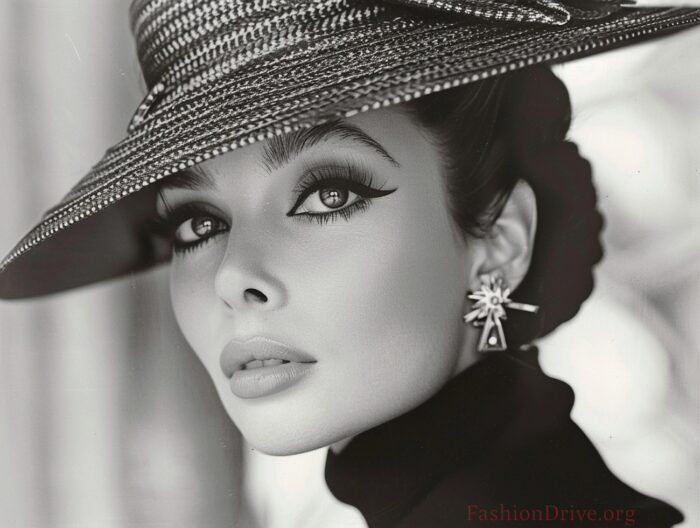
The Mini Skirt Revolution
The mini skirt stands out as one of the most iconic fashion items of the 1960s. This daring garment revolutionized women’s fashion and challenged social norms.
The hemline evolution happened rapidly. Skirts that hit just above the knee in the early ’60s soon crept higher and higher. By mid-decade, minis barely covered the thighs. I’ve always seen this rise of the hemline as a visual representation of women’s liberation.
Society’s reaction to the mini skirt was mixed. Many embraced it as a symbol of freedom and youthful rebellion. Others saw it as scandalous and inappropriate. This divide reflected the broader generational and cultural gaps of the era.
The mini skirt boom led to innovations in hosiery. Tights and stockings became essential accessories, offering coverage and warmth. Colorful and patterned options added another layer of style to the mini skirt look.
Key aspects of the mini skirt trend:
- Versatility (worn with boots, flats, or heels)
- Materials (denim, leather, PVC)
- Styling (with turtlenecks, blouses, or sweaters)
- Occasions (from casual wear to evening attire)
- Cultural impact (symbol of women’s empowerment)
Legs are not obscene. It’s the mind that’s obscene.
This quote captures the defiant spirit behind the mini skirt. It challenged people to reconsider their notions of modesty and female autonomy.
The mini skirt’s influence extended beyond fashion. It became a symbol of the changing status of women in society, marking a shift towards greater freedom and self-expression.
Men’s Fashion Transformation
The 1960s weren’t only about women’s fashion. Men’s clothing underwent a dramatic transformation too. This shift reflected changing attitudes about masculinity and self-expression.
Slim-fit suits became the rage, replacing the boxy silhouettes of the 1950s. I’ve always admired how these sleek cuts gave men a more youthful, modern appearance. Designers like Pierre Cardin and Hardy Amies led this revolution in menswear.
Turtleneck sweaters emerged as a versatile alternative to shirts and ties. They could be dressed up under a blazer or worn casually on their own. This item became a staple in many men’s wardrobes.
Color entered men’s fashion in a big way. Colorful shirts in bold patterns became acceptable, even fashionable. This embrace of color and pattern marked a departure from the conservative styles of previous decades.
Elements of 1960s men’s fashion:
- Narrow lapels on jackets
- Slim ties
- Chelsea boots
- Nehru jackets
- Bold prints (paisley, floral)
Style is knowing who you are, what you want to say, and not giving a damn.
This quote encapsulates the new attitude in men’s fashion. It was about personal expression, not conformity to rigid rules.
The changes in men’s fashion during the 1960s paved the way for even more experimentation in the following decades. They challenged traditional notions of masculinity and opened up new possibilities for men’s style.
Iconic Hairstyles of the Decade
The 1960s revolutionized hairstyles as much as clothing. From sky-high bouffants to sleek geometric cuts, hair became a powerful form of self-expression.
The beehive updo dominated the early ’60s. Women teased their hair to dizzying heights, creating a cone-like shape. This style required plenty of hairspray and patience. I’ve always seen the beehive as a last gasp of ’50s formality before the more relaxed styles took over.
As the decade progressed, long, straight hair gained popularity. This look, often center-parted, embodied the natural, free-spirited vibe of the hippie movement. Both men and women embraced this style, challenging traditional gender norms.
Vidal Sassoon transformed hairstyling with his geometric cuts. His precise, angular styles complemented the mod fashion trend perfectly. Sassoon’s most famous cut, the five-point cut, became an iconic symbol of ’60s style.
Popular 1960s hairstyles:
- The Flip (curled-up ends)
- The Pixie Cut
- Afros
- Mop Tops (inspired by The Beatles)
- Bardot-style volume
Hair is the richest ornament of women.
This quote reflects the importance placed on hairstyles during the ’60s. Hair became a crucial element of one’s overall look and personal statement.
The diverse range of hairstyles in the 1960s mirrored the era’s social changes. From conservative to rebellious, there was a style to suit every personality and lifestyle.
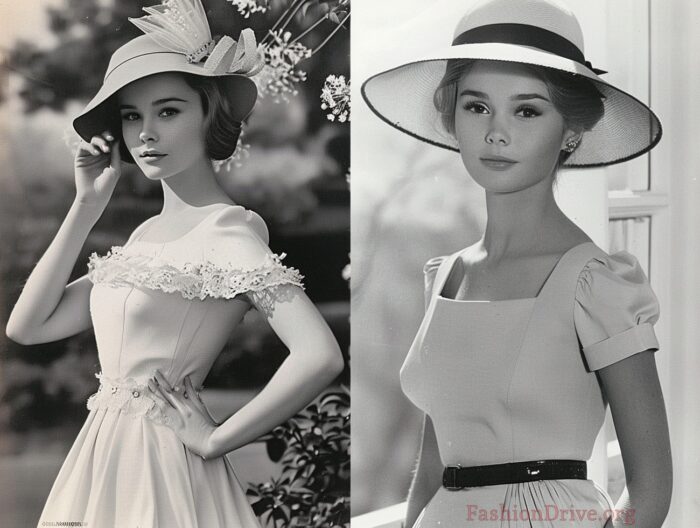
Makeup Trends and Techniques
Makeup in the 1960s was all about the eyes. The bold, dramatic eye looks defined the decade’s beauty standards, creating some of the most memorable makeup trends in history.
Twiggy’s exaggerated eyelashes became an iconic ’60s look. Makeup artists drew on lower lashes and layered mascara heavily on top lashes to create a wide-eyed, doll-like appearance. This technique dramatically changed facial features and perfectly complemented the mod fashion aesthetic.
Pastel eyeshadows dominated the color palette. Soft blues, greens, and pinks adorned eyelids, often applied up to the brow bone. I’ve always admired how these colors could be both playful and sophisticated.
Lips took a backseat to eyes in ’60s makeup. Pale, nude lips became the norm, allowing dramatic eye makeup to take center stage. This was a significant shift from the bold red lips of the 1950s.
Key elements of 1960s makeup:
- Thick, arched eyebrows
- White or pale eyeshadow as a base
- Winged eyeliner
- False eyelashes
- Pale, matte complexion
The most beautiful makeup of a woman is passion. But cosmetics are easier to buy.
This quote humorously captures the era’s fascination with makeup while nodding to the broader cultural changes happening.
1960s makeup techniques required skill and precision. They transformed the face, creating a distinct look that remains instantly recognizable today. These trends continue to inspire modern makeup artists and beauty enthusiasts.
Footwear Evolution
The 1960s saw a revolution in footwear, with styles ranging from futuristic to earthy. This decade introduced iconic shoes that remain popular today.
Go-go boots emerged as the quintessential ’60s footwear. These knee-high, low-heeled boots paired perfectly with miniskirts. White was the most popular color, but they came in various shades and materials. I’ve always admired how go-go boots blended practicality with bold style.
Platform shoes made their debut in the late ’60s. These chunky-soled shoes added height and drama to any outfit. Designers experimented with different materials and heights, pushing the boundaries of shoe design.
Birkenstocks rose in popularity, especially among the hippie crowd. These comfortable, supportive sandals aligned with the natural lifestyle many young people sought. Their popularity in the ’60s laid the groundwork for their enduring appeal.
Key 1960s footwear trends:
- Kitten heels
- Loafers (for both men and women)
- Mary Janes
- Chelsea boots
- Winklepickers (pointed-toe shoes)
Give a girl the right shoes, and she can conquer the world.
This quote captures the empowering nature of ’60s footwear. Shoes became more than accessories; they were statements of identity and attitude.
The diverse range of shoe styles in the 1960s reflected the era’s dynamic social changes. From sleek mod boots to earthy sandals, footwear choices signaled one’s alignment with various cultural movements.
Accessories and Jewelry Trends
Accessories in the 1960s were bold, playful, and often inspired by the era’s artistic movements. They added the finishing touches to the decade’s iconic looks.
Op-art inspired pieces dominated jewelry design. Geometric shapes and patterns created eye-catching effects. Earrings, bracelets, and necklaces featured black and white contrasts or vibrant color combinations. These pieces complemented the mod fashion trend perfectly.
Plastic jewelry gained popularity during this decade. Designers embraced this new material, creating colorful, lightweight pieces that were both affordable and fun. I’ve always been fascinated by how plastic democratized fashion jewelry.
Headbands and scarves became essential accessories. They served both practical and aesthetic purposes, holding back long hair and adding a pop of color or pattern to outfits.
Popular 1960s accessories:
- Large, round sunglasses
- Chain belts
- Shoulder bags
- Tie clips (for men)
- Oversized flower brooches
Accessories are what, in my opinion, pull the whole look together and make it unique.
This quote underlines the importance of accessories in creating a cohesive ’60s look. The right jewelry or accessory could transform a simple outfit into a style statement.
The variety of accessories available in the 1960s allowed for endless creativity in personal style. From mod-inspired geometric pieces to nature-themed hippie accessories, there was something for every fashion sensibility.
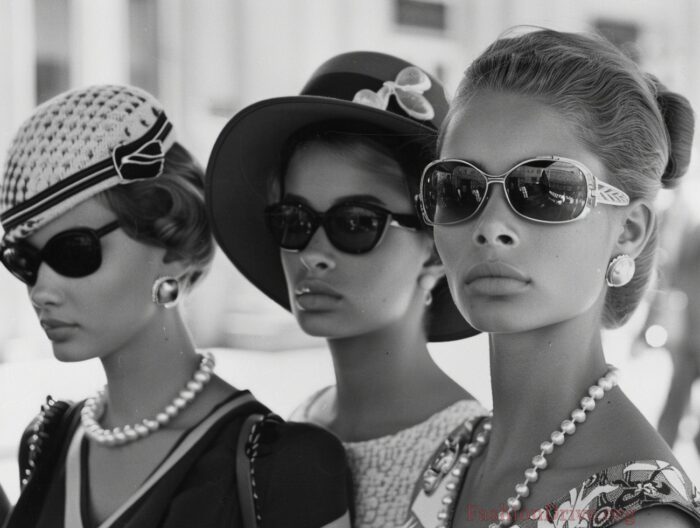
Fabrics and Textiles Innovation
The 1960s witnessed a textile revolution. New materials and innovative techniques transformed the fashion landscape, enabling designers to create groundbreaking styles.
Synthetic materials took center stage. Polyester, nylon, and acrylic became fashion mainstays. These fabrics offered easy care and wrinkle resistance, perfect for the fast-paced ’60s lifestyle. I’m continually amazed by how these synthetics changed the way we approach clothing.
Bold prints defined the era’s textiles. Designers developed new techniques to create eye-catching patterns. Screen printing allowed for complex, multi-colored designs on fabric. Op art and psychedelic influences led to dizzying, vibrant prints that captured the decade’s energy.
Tie-dye methods gained popularity, especially in the hippie subculture. This DIY technique allowed people to create unique, colorful garments at home. It embodied the era’s spirit of individuality and rebellion against mass production.
Key textile innovations of the 1960s:
- Spandex (stretchy, form-fitting fabrics)
- Corfam (synthetic leather)
- Paper dresses (disposable fashion)
- Lurex (metallic thread)
- PVC (used for raincoats and go-go boots)
Fabric doesn’t make exquisite dresses, it is the designer’s vision that makes exquisite dresses.
This quote highlights how the innovative textiles of the ’60s opened new possibilities for designers, allowing them to bring their boldest visions to life.
The textile innovations of the 1960s had a lasting impact on fashion. Many of these materials and techniques are still used today, a testament to their revolutionary nature.
Designer Spotlight: Yves Saint Laurent
Yves Saint Laurent stands out as one of the most influential designers of the 1960s. His bold vision helped shape the decade’s fashion and continues to inspire designers today.
Saint Laurent’s introduction of ready-to-wear fashion was revolutionary. In 1966, he launched Rive Gauche, his ready-to-wear line. This move democratized high fashion, making designer clothes accessible to a broader audience. I’ve always admired how this decision challenged the traditional couture system.
The Le Smoking tuxedo suit for women, introduced in 1966, remains Saint Laurent’s most iconic creation. This sleek, androgynous design challenged gender norms and redefined evening wear for women. It embodied the decade’s spirit of female empowerment.
Saint Laurent drew inspiration from art, creating collections that brought paintings to life. His Mondrian-inspired dresses of 1965 and the pop art collection of 1966 blurred the lines between fashion and art.
Key Saint Laurent contributions to 1960s fashion:
- The beatnik look (black leather jackets, turtlenecks)
- Safari jackets
- Thigh-high boots
- Sheer blouses
- The jumpsuit
Fashion fades, style is eternal.
This quote, often attributed to Saint Laurent, encapsulates his approach to design. He created clothes that were of the moment yet timeless.
Yves Saint Laurent’s work in the 1960s went beyond fashion. He challenged societal norms, empowered women, and elevated fashion to an art form. His influence on the decade’s style cannot be overstated.
Fashion Icons and Influencers
The 1960s produced some of the most memorable fashion icons in history. These individuals shaped trends and influenced how millions dressed.
Twiggy’s impact on 1960s fashion was monumental. Her waif-like figure and big, doe eyes defined the mod look. Twiggy’s short haircut and dramatic eye makeup became widely imitated. I’ve always been fascinated by how she challenged traditional beauty standards and became a symbol of ’60s youth culture.
Jackie Kennedy’s style influence extended far beyond her role as First Lady. Her elegant, refined look contrasted with the more rebellious styles of the era. Jackie popularized pillbox hats, tailored suits, and oversized sunglasses. Her style embodied sophistication and grace.
Jean Shrimpton’s modeling career helped define the look of the ’60s. Known as “The Shrimp,” she epitomized the era’s ideal of youth and beauty. Shrimpton’s appearance in a mini-dress at the 1965 Melbourne Cup Carnival caused a sensation and is often credited with popularizing the miniskirt internationally.
Key fashion influencers of the 1960s:
- Audrey Hepburn
- Brigitte Bardot
- Mick Jagger
- Mary Quant
- Jane Birkin
Fashion is not something that exists in dresses only. Fashion is in the sky, in the street, fashion has to do with ideas, the way we live, what is happening.
This quote captures how these icons weren’t merely clothes hangers but embodiments of the era’s changing attitudes and lifestyles.
The fashion icons of the 1960s did more than set trends. They represented new ideals of beauty, challenged societal norms, and inspired a generation to express themselves through clothing.
Global Fashion Exchanges
The 1960s saw an unprecedented level of global fashion exchange. Ideas and styles flowed across borders, creating a rich tapestry of international influences.
The British Invasion had a massive impact on global fashion. As British bands like The Beatles and The Rolling Stones conquered the music world, they brought their style with them. Suddenly, young people worldwide wanted to dress like their British idols. I’ve always been impressed by how quickly these trends spread in an era before the internet.
Indian and African influences enriched Western fashion. The hippie movement embraced colorful, ethnic-inspired garments and accessories. Kaftans, tribal prints, and beaded jewelry became popular, reflecting a growing interest in non-Western cultures.
Japanese designers began to make their mark on the global fashion scene. Designers like Kenzo Takada brought Eastern aesthetics to Western fashion, paving the way for the Japanese fashion revolution of later decades.
Key global fashion trends of the 1960s:
- Nehru jackets (inspired by Indian Prime Minister Jawaharlal Nehru)
- Dashikis (West African shirts)
- Mexican peasant blouses
- Moroccan-inspired caftans
- Russian-style fur hats
Fashion is a language that creates itself in clothes to interpret reality.
This quote reflects how the global fashion exchanges of the ’60s allowed people to explore and express different cultural realities through clothing.
The international fashion exchanges of the 1960s broke down barriers and expanded the fashion world’s horizons. They set the stage for the truly global fashion industry we know today.
Conclusion
The fashion of the 1960s left an indelible mark on our cultural landscape. This decade of rapid change and bold experimentation continues to inspire designers and fashion lovers today.
The 1960s saw fashion become a powerful form of self-expression. From the sleek lines of mod style to the free-flowing garments of the hippie movement, clothes reflected the wearer’s values and worldview. I’m continually amazed by how relevant many of these styles remain.
Innovation defined 1960s fashion. New materials, cuts, and production methods revolutionized the industry. Ready-to-wear collections democratized high fashion, making designer styles accessible to a broader audience.
The decade’s fashion also challenged social norms. Miniskirts defied traditional ideas of modesty, while unisex styles blurred gender lines. These changes reflected and contributed to the era’s social movements.
Key legacies of 1960s fashion:
- Youth-driven trends
- Bold, expressive styles
- Fusion of fashion and popular culture
- Emphasis on individuality
- Global influences in Western fashion
Fashion is a form of ugliness so intolerable that we have to alter it every six months.
This quote humorously captures the rapid pace of change in 1960s fashion, where new trends constantly emerged and evolved.
The fashion of the 1960s was more than a series of trends. It was a cultural revolution expressed through clothing. Its impact resonates even now, inspiring new generations to use fashion as a means of personal and social expression.
